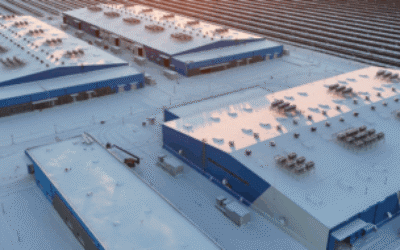
Communities anywhere within the service area of California utility Pacific Gas & Electric (PG&E) will now be eligible to apply for support to install renewable-plus-storage microgrids.
In April this year, PG&E, one of the state’s big three investor-owned utilities (IOUs), rolled out the Community Microgrid Enablement Program (CMEP). The programme operates under a special tariff approved by the regulatory California Public Utilities Commission (CPUC).
It offers financial as well as technical guidance and design support for interconnected exporting energy producing resources that do not exceed 20MW in aggregate within a PG&E distribution grid connection point.
PG&E said that the multi-customer microgrid projects will largely be modelled on and replicated from an initial pilot project, Redwood Coast Airport Renewable Energy Microgrid. That front-of-meter project includes a DC-coupled 2.2MW PV array coupled with a 2MW / 8MWh Tesla battery energy storage system (BESS).
Try Premium for just $1
- Full premium access for the first month at only $1
- Converts to an annual rate after 30 days unless cancelled
- Cancel anytime during the trial period
Premium Benefits
- Expert industry analysis and interviews
- Digital access to PV Tech Power journal
- Exclusive event discounts
Or get the full Premium subscription right away
Or continue reading this article for free
That microgrid will provide renewable energy to customers that include an airport and US Coast Guard Station, as well as providing a community in Humboldt County with backup power that can kick in in the event of an outage. It is able to operate as a grid-connected asset as well as capability to be ‘islanded’ and operate independently.
Initially, the programme was available to communities in High Fire Threat Districts. These were areas most at-risk from wildfires and the Public Safety Power Shutoff (PSPS) events that PG&E has enacted to prevent its electrical infrastructure from potentially causing more wildfires — as has unfortunately been the case in the past.
PG&E has about five and a half million customers and the utility requested permission from the CPUC to expand eligibility to all in its service area, which the regulator has approved.
In addition to the community microgrid programme, PG&E got permission last year to supply customers in the worst-affected PSPS areas with 450MW of “temporary mobile generation” systems.





